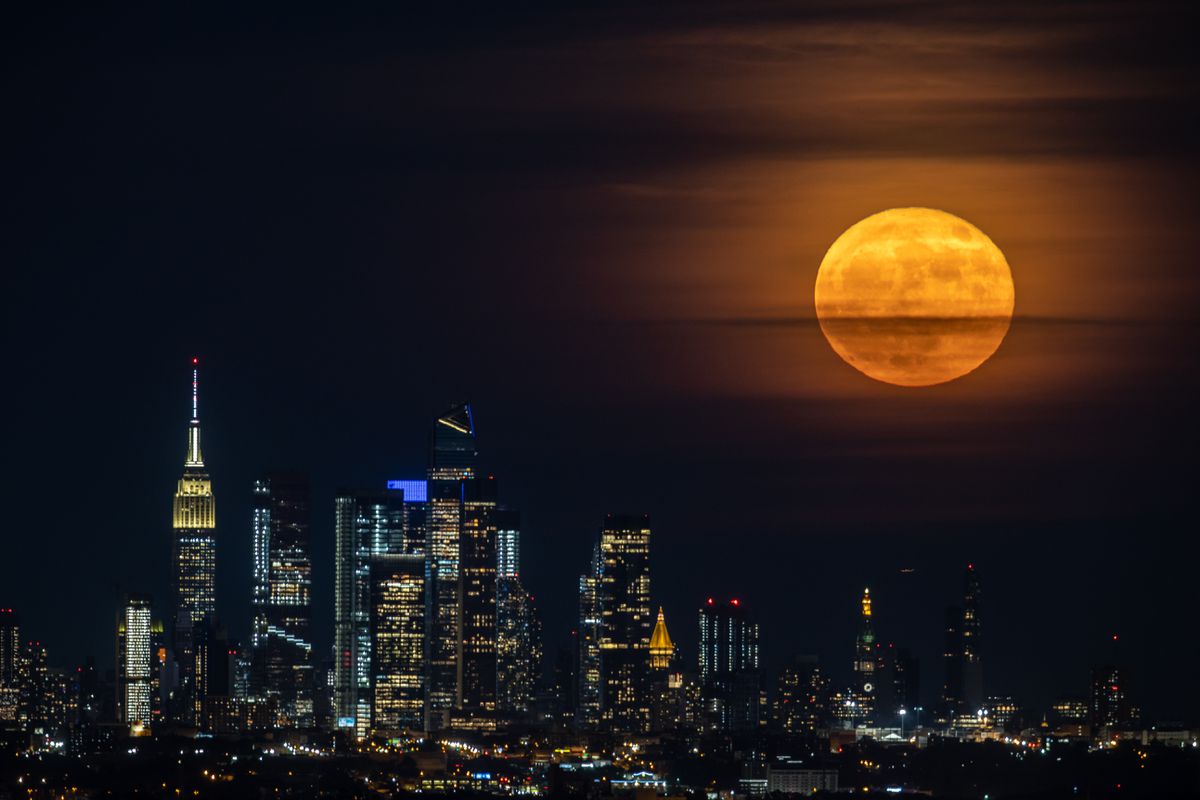As night falls on July 13, the world will see the biggest and brightest moon of the year. When does this phenomenon popularly known as Super Moon occur? full moon Coinciding with perigee (the point of its orbit closest to Earth), it causes a slight increase in its apparent size and brightness in the night sky.
The July Supermoon, the third and last of the year, will appear in the constellation Sagittarius at 9:00 PM in the east (Chicago, Houston, Mexico City, Bogotá). The first minutes after its appearance are the best of the year for taking photos and videos, when its separation from the horizon is low and the presence of other objects such as buildings, mountains or trees creates an optical illusion that magnifies its size. Later in the night, the July full moon will continue its path through the sky until it disappears from view with the arrival of dawn, however, this phenomenon will continue to be less visible for the following two nights.
What is a Super Moon?
Since the 1980s, a full moon at perigee has been known as a supermoon. Although it has no scientific origin, this term Proposed by an astrologer Named by Richard Knoll in 1979, it has since gained popularity and is informally used today by NASA and the Royal Greenwich Observatory to refer to the phenomenon.
About 357,200 kilometers from Earth (as opposed to the 384,400 kilometers that separate the two stars on average), Moon approach This will allow an Earth observer to see a full moon that is 14% larger and 30% brighter than normal, which won’t happen again until July next year.
Why the Stock Moon?
Although the name by which our natural satellite is known varies historically according to each culture’s worldview, the July moon that follows the arrival of the golden summer was called the Deer Moon by Native Americans. According to NASAThe Algonquian tribes of northeastern America associated the July full moon with the appearance of antlers on the head of a young male deer.
Popular names given to full moons today (such as the Strawberry Moon, Corn Moon, or Snow Moon) derive from their origin. Maine Farmer’s AlmanacA publication dating back to the 1930s compiled the names given to the moon by Native Americans throughout the year, a tradition recently revived by the US space agency.
Subscribe here to do newsletter EL PAÍS Mexico and get all the information keys of the news of this country





:quality(85)/cloudfront-us-east-1.images.arcpublishing.com/infobae/KTKFKR763RBZ5BDQZJ36S5QUHM.jpg)